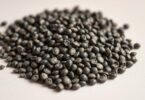What if a vibrant root vegetable sitting in your kitchen could unlock better health for your furry friend? While many pet owners stick to traditional kibble, nature offers nutrient-rich alternatives that might surprise you.
Packed with vitamin A for vision support and fiber for digestive wellness, this orange superfood has gained attention among veterinarians. But not all human foods suit canine needs—preparation and moderation matter. Heart + Paw experts confirm cooked, unseasoned varieties provide safe nutritional boosts when introduced properly.
This guide combines scientific research with practical tips for pet parents. Discover how to transform this earthy ingredient into tasty, vet-approved treats. Learn why baking or steaming preserves its benefits, and why raw versions pose risks. Claudia Kawczynska’s work on canine diets reinforces the importance of balancing commercial meals with wholesome supplements.
Ready to explore a colorful addition to your pup’s bowl? Let’s dive into evidence-based strategies for enhancing mealtime safely.
Understanding Sweet Potatoes in a Dog’s Diet
Pet nutrition trends often mirror human food crazes, and sweet potatoes are no exception. These vibrant tubers belong to the morning glory family, unlike yams (from the lily family) or white potatoes (nightshades). Their orange flesh packs beta-carotene, fiber, and vitamin C—nutrients that support skin health and digestion.
What Are Sweet Potatoes and How Do They Differ?
True sweet potatoes (Ipomoea batatas) have smoother skin than yams and a lower glycemic index than white varieties. While yams offer more starch, these orange roots provide six times the daily vitamin A needs per serving. Their natural sugars make them appealing to pets without spiking blood sugar like processed treats.
Historical Use and Popularity in Pet Nutrition
Since the 2010s, pet food brands began incorporating this vegetable as owners sought wholesome alternatives to grain-heavy kibble. Claudia Kawczynska’s research highlights their role in ancestral canine diets, while veterinarians praise cooked versions for sensitive stomachs. Today, you’ll find them in limited-ingredient foods and dental chews, proving their versatility.
Benefits and Nutritional Profile for Dogs
Nature's pantry offers hidden gems that boost pet wellness when thoughtfully incorporated. This root vegetable delivers a powerhouse combination of essential compounds, making it a standout supplement for balanced canine nutrition.
Key Vitamins, Minerals, and Dietary Fiber
Every serving packs vitamin A for eye health and immune support—equivalent to six days' requirements for medium-sized pets. Vitamin C acts as an antioxidant, while B6 aids metabolism. The magnesium content promotes nerve function, and potassium regulates fluid balance.
Dietary fiber shines here, with 3 grams per 100-gram portion. This soluble fiber feeds beneficial gut bacteria, easing constipation and diarrhea. Studies from Tufts University confirm its role in maintaining consistent stool quality.
How They Support Digestive and Overall Health
Phytonutrients like beta-carotene combat inflammation linked to arthritis. Pets consuming this vegetable often show glossier coats and steadier energy levels due to improved nutrient absorption.
Laboratory analyses reveal 112% more antioxidants than blueberries. These compounds neutralize free radicals, reducing cellular damage risks. Combined with essential minerals, they create a synergistic effect that mirrors superfood benefits observed in human nutrition research.
How to Safely Prepare Sweet Potatoes for Your Dog
Transforming this nutrient-packed root into pet-friendly meals requires careful technique. Gentle cooking preserves its benefits while eliminating risks, turning kitchen prep into an act of care for your companion.
Cooking Methods: Steaming, Boiling, and Dehydrating
Steam slices for 15 minutes to retain dietary fiber and vitamins. This method keeps texture firm while making nutrients bioavailable. Boiling softens the vegetable quickly—ideal for mixing with regular meals.
Dehydrate thin strips at 165°F for 6-8 hours to create chewy snacks. These homemade treats avoid additives found in store-bought options. Always cool cooked pieces before serving to prevent mouth burns.
Important Preparation Tips: Washing, Peeling, and Portion Control
Scrub skins thoroughly under running water to remove dirt. Peeling reduces pesticide exposure but removes some fiber—balance safety with nutritional goals. Chop into bite-sized cubes to aid digestion.
Limit portions to 1-3 tablespoons per 10 pounds of body weight daily. Mix small amounts into existing meals to avoid stomach upset. Lightly coat cooked pieces with olive oil to boost nutrient absorption.
Never serve raw versions, which contain hard-to-digest compounds. Proper preparation turns this colorful vegetable into a safe, energizing addition to your pet’s bowl.
Can dogs have sweet potato: Safety and Feeding Guidelines
Balancing your pet’s meals requires precision—too much of a good thing can lead to unintended consequences. Heart + Paw veterinarians emphasize that moderation transforms nutrient-rich foods into allies for animal health. Let’s explore how to harness benefits without crossing into risky territory.
Portion Rules Every Pet Owner Should Know
Tailor servings to your companion’s weight: 1 teaspoon per 10 pounds daily for small breeds, up to ¼ cup for larger animals. These orange tubers should never exceed 10% of daily calories. Overfeeding risks weight gain from natural sugars, despite their low glycemic index.
Manganese plays a key role here—this mineral aids bone development and enzyme function. A half-cup serving provides 30% of a medium-sized pet’s needs. Pairing it with zinc-rich proteins like turkey maximizes absorption without overloading systems.
Limit treats to 2-3 weekly servings alongside regular meals. Rotate with pumpkin or green beans to maintain dietary variety. Always introduce new items gradually, monitoring for allergies or digestive shifts.
Consult your vet before adjusting meals for puppies, seniors, or pets with diabetes. What works for one animal might harm another. Strategic inclusion supports wellness; haphazard use undermines it. Keep portions controlled, and those wagging tails will thank you.
Incorporating Sweet Potatoes into Your Dog’s Diet
Elevating your pet's meals can be both simple and nutritious with creative kitchen strategies. This vibrant ingredient offers versatility beyond basic mash – think textured toppers and chewy rewards that make tails wag.
Simple Recipe Ideas and Treat Alternatives
Transform cooked sweet potatoes into frozen cubes for teething pups. Mix mashed versions with plain yogurt for probiotic-rich toppers. Dehydrate thin slices at 160°F for 8 hours to create portable chews.
Freeze-dried options provide crunch without added sugar. These shelf-stable snacks retain 90% of nutrients, making them ideal for travel. Rotate recipes weekly to maintain interest and nutritional variety.
Mixing With Regular Meals
Start with 1 teaspoon blended into kibble for small breeds. The orange vegetable’s beta-carotene supports skin health and cellular repair. Gradually increase portions over 7 days while monitoring stool consistency.
Combine with lean proteins like chicken for balanced meals. Limit additions to 10% of daily calories to prevent blood sugar spikes. Always remove skins for puppies or seniors with sensitive digestion.
Pet owners often ask about substitutions – try replacing 25% of starchy carbs with this fiber-rich alternative. Its natural sweetness satisfies cravings while delivering essential vitamins. Remember, moderation maintains diet harmony.
Wrapping Up Your Dog’s Diet with Sweet Potato Benefits
Nutrient-rich additions to your pet’s bowl can enhance their well-being when approached thoughtfully. These orange tubers deliver essential vitamins and fiber that support multiple body functions, from digestion to skin vitality. Steamed or baked versions maximize benefits while keeping risks low.
Portion control remains critical. Experts recommend limiting treats to 10% of daily calories. Cooked sweet varieties blend seamlessly into meals as supplements, not replacements. Their natural compounds work synergistically with proteins for balanced nutrition.
Veterinarians emphasize moderation for maintaining healthy weight and blood sugar levels. Rotate this ingredient with other veggies like carrots to sustain dietary variety. Always consult your clinic before introducing new foods to puppies or pets with health conditions.
For those exploring wholesome snacks, sweet potatoes also offer versatility. Try dehydrating thin slices for chew rewards or mixing mash into kibble. Visit trusted pet nutrition sites for creative recipes that turn kitchen prep into tail-wagging moments.
When prepared mindfully, these colorful roots become more than just treats—they’re a functional boost to your trusted companion’s daily routine.
FAQ
Are raw sweet potatoes safe for pets?
Uncooked tubers can cause digestive discomfort due to their tough texture. Always serve steamed, boiled, or baked without additives like butter or salt to ensure easy digestion.
How often should these orange vegetables appear in meals?
Veterinarians recommend limiting starchy additions to 10% of daily caloric intake. For a 30-pound companion, 1–2 tablespoons of mashed or cubed cooked flesh 2–3 times weekly provides balanced fiber without excess sugars.
Can diabetic pets consume this ingredient?
While lower on the glycemic index than white potatoes, moderation remains key. Consult your vet to adjust meal plans, as overfeeding may impact blood glucose levels in sensitive animals.










Leave a Comment